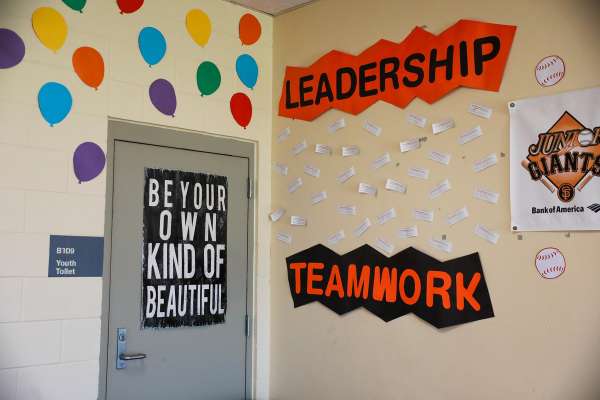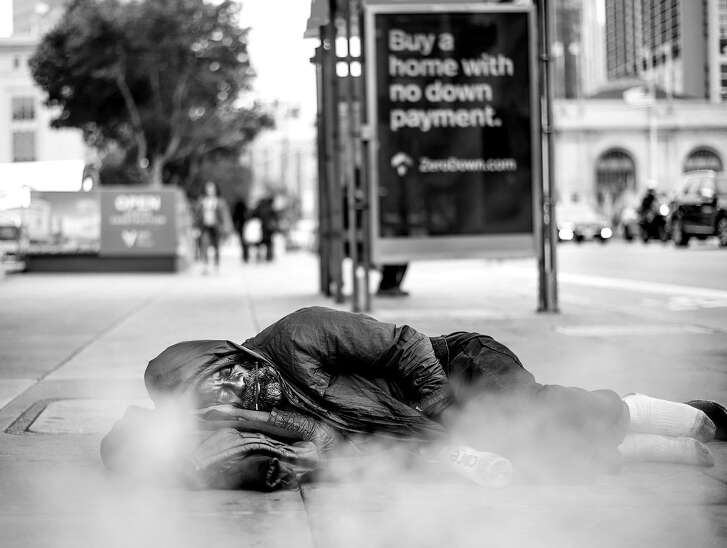Amid historic shifts in juvenile justice, some counties lock up kids for treatment


Raquel, an East Bay teenager, was caught shoplifting clothes in late 2015 and again in early 2016, during a difficult period in her life. Her father died, court records show. Her brother had a psychotic break that led him to try to stab her and their mother. Classmates at her school shared a nude photo of her on social media.
The girl, identified in state court documents only by her first name, had been caught shoplifting three years earlier. This time, noting that Raquel was often left unsupervised, had smoked marijuana, and tried to steal thousands of dollars worth of merchandise, a judge placed her in a program intended to keep her off drugs, improve her relationship with her mom and get her to focus on schoolwork.
She was 15. The months of treatment would take place inside Contra Costa County’s juvenile hall.
Across the country, some juvenile justice officials have taken steps to shift away from incarcerating youths. But many counties in California, including Contra Costa, are instead sending teenagers found responsible for crimes to rehabilitative programs housed in juvenile halls or in similar maximum-security settings, The Chronicle found.
This differs from the approach in other communities, where authorities typically send high-risk offenders who don’t require placement in a state Division of Juvenile Justice facility to therapeutic group homes, to dorm-like settings in county-run camps, or provide intensive services and supervision while teens are at home.
Vanishing Violence
Counties that commit young people to treatment in juvenile halls and similar facilities rely on these programs even though there’s little evidence that placing teenagers in jail-like settings, sometimes for a year or longer, is beneficial.
In some cases, judges have sent youths to these in-custody programs after they were found guilty of offenses as minor as theft, vandalism or drug possession, according to a Chronicle review of county records.
Some probation chiefs say that treating troubled children inside juvenile lockups keeps them close to home and provides the help they need, while keeping them and the community safe.
“It’s not being locked that’s the issue, it’s how you treat the kids in that space,” said San Luis Obispo County Probation Chief Jim Salio, who oversees the Coastal Valley Academy, a program within juvenile hall that is an alternative to what he described as ineffective and far-away group home placements.
Salio said he has done everything in his power to make the facility feel more like home. There’s a fridge filled with snacks and a big-screen television in the common area, and staffers take youths on outings in the community or to see family.
But at a time when youth crime in California is plummeting to historic lows, juvenile justice reform advocates say the practice of locking up young people for months to rehabilitate them runs counter to a broad body of research showing that incarceration is traumatic and increases the likelihood that teenagers will reoffend. Instead, they say, young people struggling with mental illness, trauma or other issues should be placed in more nurturing environments.
Cities including New York have done just that, sharply reducing the use of cells for youth. In June, San Francisco supervisors voted to close the city’s juvenile hall within two years, with small community-based programs and services replacing it. That move followed The Chronicle’s “Vanishing Violence” series, which examined the drop-off in youth crime and authorities’ often inadequate response to the trend.
“Keeping kids locked up exacerbates mental illness and trauma,” said Richard Braucher, staff attorney for the First District Appellate Project, a San Francisco nonprofit law office that helps poor people with legal representation. “If you want to predict future incarceration, you lock up that kid.”
The Chronicle examined more than a dozen in-custody commitment programs in California. Some are inside juvenile halls that have been emptying due to the drop in crime and shift away from incarceration. Others are in new facilities built with tens of millions of dollars in state grants made available in 2007, after sweeping legislation moved most young people out of state-run youth prisons and into county custody.
Each program looks and operates differently. In some counties, certain teens get home passes and can go to work or community college during the day, while others impose many of the same rules and restrictions as juvenile hall.
Contra Costa County officials opened the Youthful Offender Treatment Program for boys in 2008 and the Girls in Motion program in 2010. These programs, inside the juvenile hall in Martinez, served 30 boys and seven girls on a recent fall day.
The teens, placed by a judge’s order, are required to participate in counseling and gender-specific treatment sessions. Girls take about six months to complete the program, boys about 10 months.
Participants typically follow the same schedule and rules as other youths being held in juvenile hall. Their movements are restricted and their days follow a rigid schedule, with meals, school, mandated recreation and designated time in cells. The difference: counseling sessions and classes to address anger management, substance abuse, trauma and other issues.
The treatments are “pro-social, evidence-based” therapies that research shows in general to be effective with young people, said Contra Costa County Probation Chief Todd Billeci. Whether they work in a maximum-security setting is unclear. The county only recently began evaluating the programs’ impact on recidivism rates and other outcomes.
Good behavior in the program each month is rewarded with stars: earning 25 in the first month buys a pair of colored socks, rather than a random pair out of the laundry. Another 25 stars during the second month can mean a slightly larger pillow or a personal washcloth.
Serious behavioral infractions, like fighting, can mean removal from the program and a temporary transfer to a cell in a nonprogram unit in juvenile hall. That pauses progress in treatment and can extend a youth’s time in custody by more than a month.
One former Contra Costa County detainee, 18-year-old Eric, left the county juvenile hall in July after completing the Youthful Offender Treatment Program.
“It felt like you couldn’t go anywhere, you’re just sitting there,” Eric said in an interview. In general, The Chronicle does not identify juveniles accused of crimes to protect their privacy, under the newsroom’s reporting policies.
Eric, who declined to discuss his past offenses, believes the program changed him for the better, though he doesn’t think he needed to sleep in a cell to get the benefits.
“It could have been in a different setting,” he said.
In Fresno County, teens can spend up to a year locked up while in treatment.
Fresno’s commitment programs are housed on a sprawling, fenced campus. The facility has units for substance-abuse treatment, more serious offenders, girls and younger offenders. There’s also a pod of cells for those modeling good behavior.
Juveniles have access to a gym, cafeteria and a welding shop. With good behavior, they are allowed to take field trips to museums, baseball games or other places. But they sleep in locked cells and wear institutional clothing while inside.
On a fall afternoon, Chronicle journalists were allowed to tour the facility and briefly observe, but not interact with, young people during a break in programming.
The handful of youths sentenced to a yearlong program ate lunch — baloney sandwiches and chocolate milk — while ignoring the home improvement show playing on television. One raised his hand to ask permission before throwing his trash into a garbage can a few feet away.
While some of those in secure commitment programs in California have been found guilty of violent felonies, others — like Raquel in Contra Costa County — are less serious offenders, records show.
In one recent case, a Fresno County judge ordered a young person into the substance-abuse program after the teen was found responsible for misdemeanor drug possession, according to juvenile hall intake records reviewed by The Chronicle. Another teen was sent to the program last year after a probation violation related to a misdemeanor battery charge.
Fresno County Probation Chief Kirk Haynes said the programs ensure that youths get the therapeutic support they need. He believes they are effective, but the county has not researched whether that is true.
Anecdotally, he said, “I think kids who participate in those programs, they tend not to come back into custody for new crimes or drug use.”
Probation officials in most of the counties examined by The Chronicle said they did not have, or did not provide, studies of how youths fared after leaving their commitment programs, despite receiving tens of millions of dollars in state grants last year to operate them.
However, San Diego County officials said their Youthful Offender Unit in juvenile hall — which treats serious or habitual offenders — boasted a 93% success rate, meaning very few young people leaving it had a new criminal conviction 18 months after probation supervision ended.
Nationwide, no comprehensive research exists on how treatment programs within juvenile halls or similar facilities affect teenagers’ rehabilitation, said Sarah Cusworth Walker, research associate professor of psychology at the University of Washington School of Medicine.
“Forcing kids to go through treatment in a jail setting, and sentencing them to nine months or a year, we don’t know that has any therapeutic benefit,” said Walker, who conducted a national review of research on the topic. “The safest thing to say is that those facilities were not developed with treatment in mind. They were initially built purely for security.”
Officials in some counties, including San Francisco, do not use juvenile hall or similar facilities for long-term treatment.
Santa Barbara County recently scrapped a juvenile hall commitment program after finding that some young people in it were not sophisticated or violent offenders, said Probation Chief Tanja Heitman. The department now focuses on keeping youth at home with services, or, if necessary, at the county’s less-secure camp in the Los Padres National Forest.
In Santa Clara County, Judge Katherine Lucero will often send high-risk youths — those who have committed multiple felonies or assault with a deadly weapon or participated in gang activity, for example — to the county’s William F. James Ranch in Morgan Hill, which provides a less secure, dorm-like environment with no cells or locked rooms.
The most serious offenders, those found responsible for crimes like murder or sexual assault, are sent to a state youth prison or prosecuted as adults, the judge said.
“Our county has specifically not wanted to create detention hall programming,” Lucero said. “We’re horrified any time a youth is in custody in this juvenile hall setting for long periods of time, as it is not a rehabilitative setting.”
Jill Tucker and Joaquin Palomino are San Francisco Chronicle staff writers. Email: jtucker@sfchronicle.com, jpalomino@sfchronicle.com Twitter: @jilltucker, @joaquinpalomino

 Pathways Drug Rehabilitation Luxury Addiction Treatment & Detox Center
Pathways Drug Rehabilitation Luxury Addiction Treatment & Detox Center


